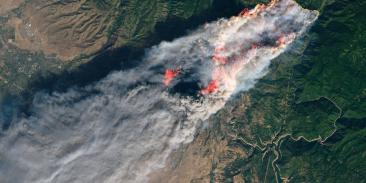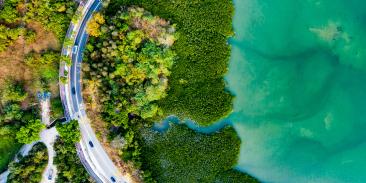Natural infrastructure strengthens our climate resilience
Policymakers should fund and implement solutions that prioritize or incorporate natural infrastructure
Extreme weather is taking a greater toll on the United States than ever before.
For many U.S. communities, both inland and along the coast, flooding caused by sea level rise, hurricanes and heavy rainfall events is the new normal. Conversely, other regions are experiencing prolonged droughts and water supply shortages, punctuated by heavy deluges of precipitation.
Policymakers and planners can help to reduce risk and protect communities from the damaging impacts of this new normal by turning to solutions that prioritize or incorporate natural infrastructure.
What is natural infrastructure?
Natural infrastructure refers to naturally occurring landscape features that use, restore or emulate natural ecological processes.
Communities can use natural infrastructure to lessen the impacts of extreme weather, such as drought or flooding, while providing other ecological and human benefits.
How natural infrastructure reduces flooding [PDF]
Natural Infrastructure can benefit diverse ecosystems:
- Coasts: Healthy natural features — such as mangrove forests, living shorelines, wetlands, reefs and barrier islands — can absorb the shock of storm surge and better protect communities from sea level rise.
- Rivers and floodplains: Wetlands, floodplains and riparian buffers can slow and retain water to reduce flooding, while filtering pollutants and providing wildlife habitat.
- Aquifers: Aquifers, which contain over 95% of Earth’s freshwater, serve as a natural underground water storage solution. For areas prone to drought or climate variability, storing water in aquifers can build a more resilient water supply. Healthy aquifers also support flows to rivers and streams, helping to create important habitat for wildlife.
- Agricultural landscapes: Two-stage ditches, groundwater recharge basins and buffer strips built near and within working lands can retain water, improve water quality and limit the impact of flooding.
How natural infrastructure helps water quality [PDF]
Moving natural infrastructure forward
Policymakers and planners in local, state and federal government need to prioritize, fund and implement natural infrastructure.
We continue to advocate for the prioritization and implementation of nature-based solutions in the biennial Water Resources Development Act, Federal Emergency Management Agency programs and other flood resilience projects.
Globally, organizations are also collaborating to publish international guidelines on natural infrastructure to support the sustainability and resilience of our coasts, bays and estuaries.
Policymakers, landowners and other stakeholders can strengthen the resilience of our ecosystems and communities by implementing natural infrastructure before a disaster occurs.
MEDIA CONTACT
Samantha Tausendschoen
(715) 220-9930 (office)













